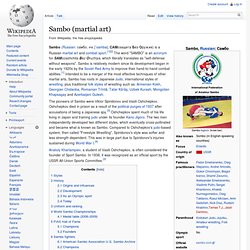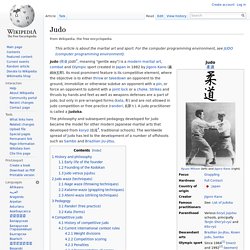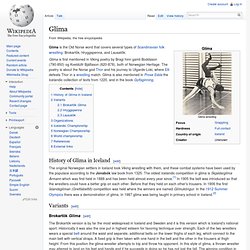

Sambo (martial art) The pioneers of Sambo were Viktor Spiridonov and Vasili Oshchepkov.

Oshchepkov died in prison as a result of the political purges of 1937 after accusations of being a Japanese spy.[3] Oshchepkov spent much of his life living in Japan and training judo under its founder Kano Jigoro. The two men independently developed two different styles, which eventually cross-pollinated and became what is known as Sambo. Compared to Oshchepkov's judo-based system, then called "Freestyle Wrestling", Spiridonov's style was softer and less strength dependent. Judo. History and philosophy[edit] Early life of the founder[edit] The early history of judo is inseparable from its founder, Japanese polymath and educator Jigoro Kano (嘉納 治五郎, Kanō Jigorō?

, 1860–1938), born Shinnosuke Kano (嘉納 新之助, Kanō Shinnosuke?). Kano was born into a relatively affluent family. His father, Jirosaku, was the second son of the head priest of the Shinto Hiyoshi shrine in Shiga Prefecture. Glima. Glíma is the Old Norse word that covers several types of Scandinavian folk wrestling: Brokartök, Hryggspenna, and Lausatök.

Glima is first mentioned in Viking poetry by Bragi hinn gamli Boddason (790-850) og Kveldúlfr Bjálfason (820-878), both of Norwegian Heritage. The poetry is about the Norse god Thor and his journey to Utgards-Loki, where Elli defeats Thor in a wrestling match. Glima is also mentioned in Prose Edda the Icelandic collection of texts from 1220, and in the book Gylfaginning. History of Glíma in Iceland[edit] The original Norwegian settlers in Iceland took Viking wrestling with them, and these combat systems have been used by the populace according to the Jónsbók law book from 1325.